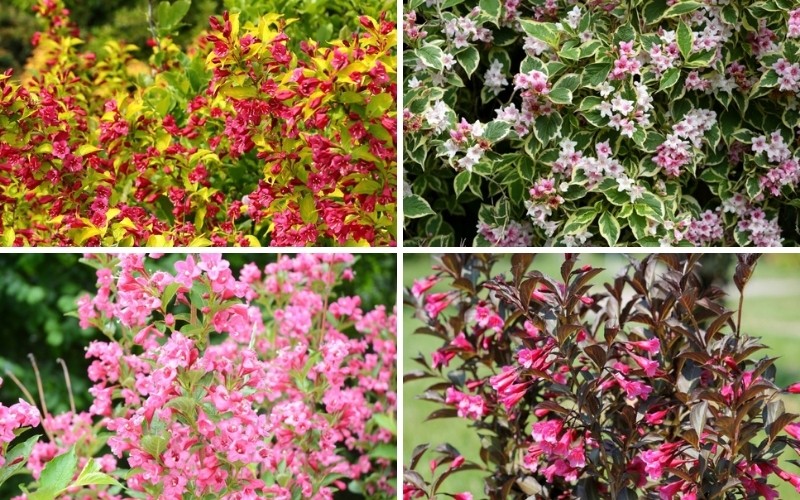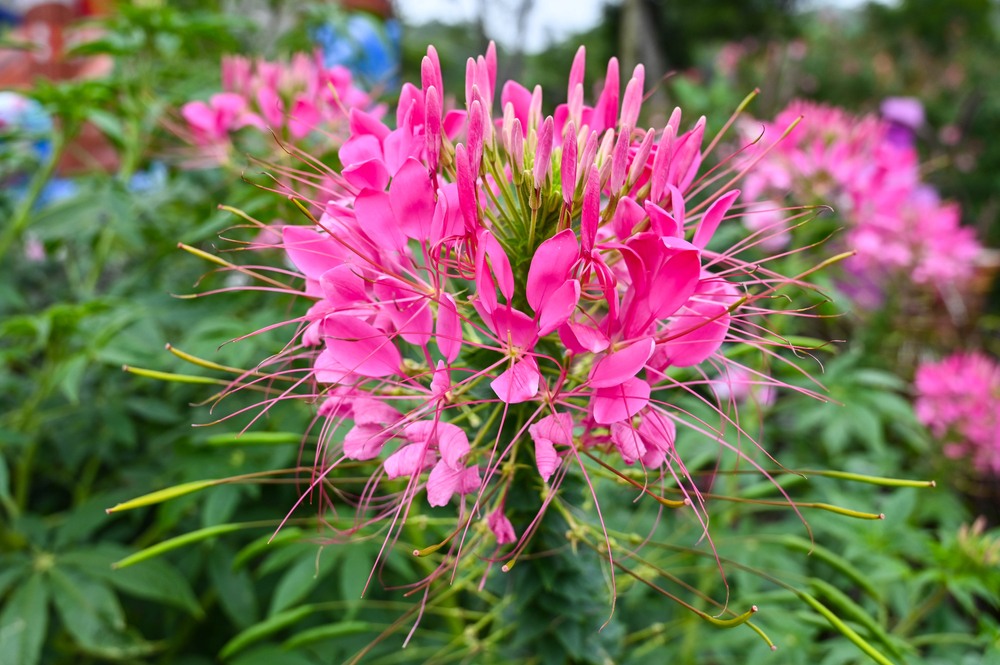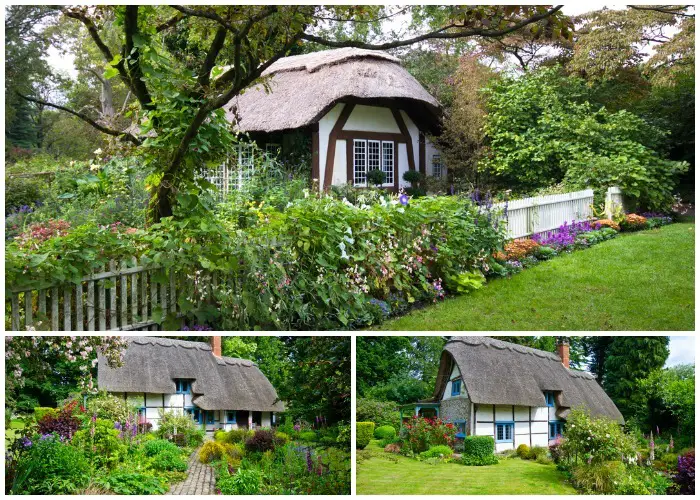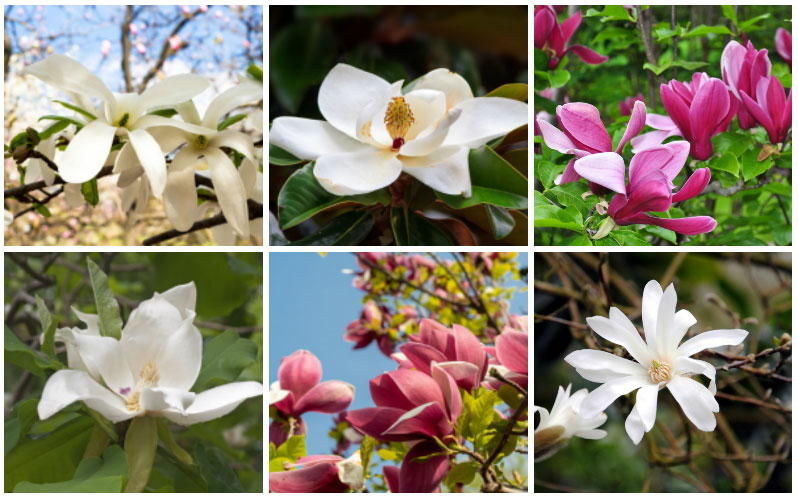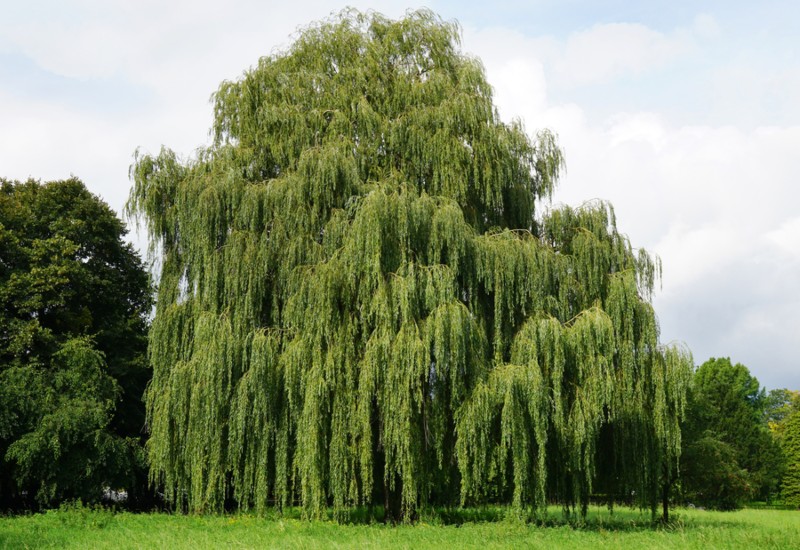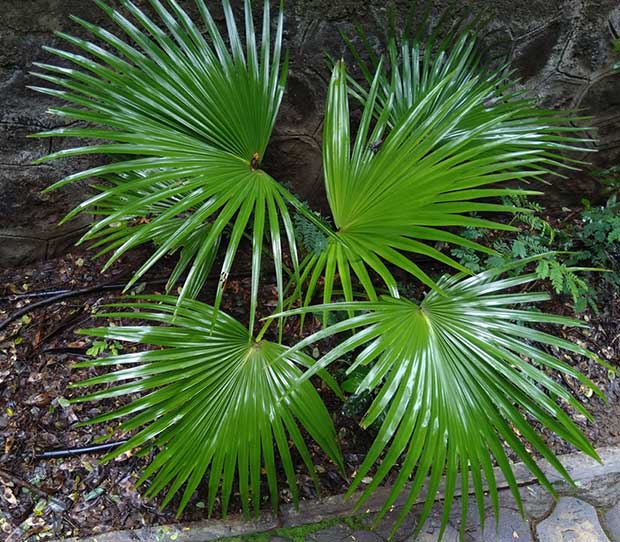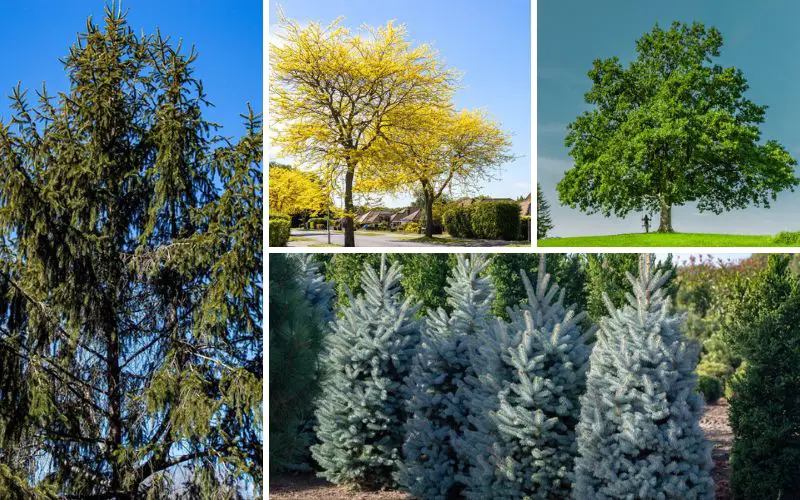
Are you looking to make your Ohio home or property more attractive and appealing? Do you need trees to hold your soil tighter and protect it against harsh erosion winds?
The following 10 trees should help you! They’re the 10 best and most fun trees to grow in Ohio. They’re also quite attractive and should provide your yard with a gorgeous and eye-catching look.
American Beech Tree
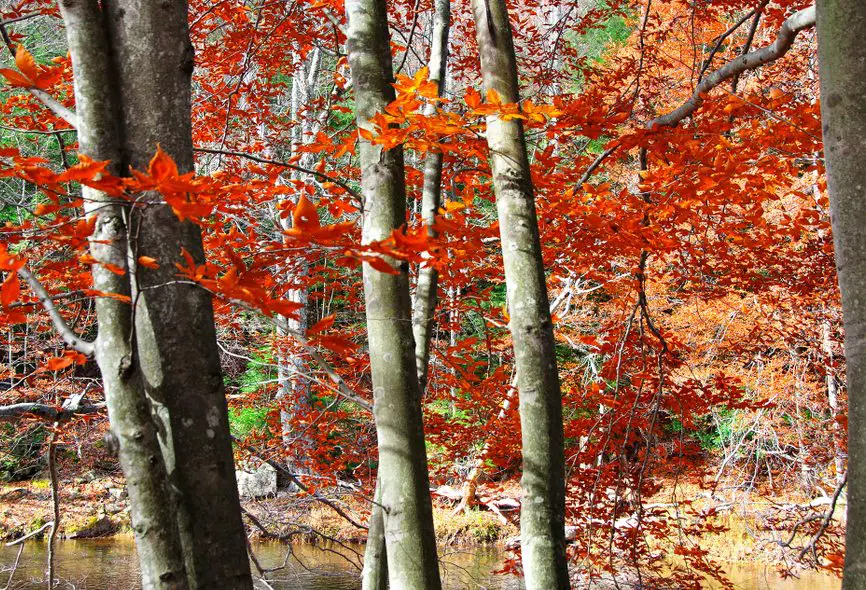
The American Beech Tree is a popular deciduous tree known for its twisting branches and its ability to hold onto its brown-yellow leaves throughout winter. They produce nuts that, when unripe, can be mildly toxic. Make sure to clean them from your yard if you have kids or pets.
The Beech does best in medium moisture with a rich and well-drained texture. They thrive throughout Eastern North America and are particularly spread throughout the eastern part of Ohio. Their tall height and broad blooms make them a perfect shade or privacy tree.
- Scientific name: Fagus grandifolia
- Plant Type: Deciduous
- Plant Size: 50-80 feet tall
- Sun Exposure: Full to partial
- Bloom Time: April to May
- USDA Plant Zone: 3-9
American Chestnut
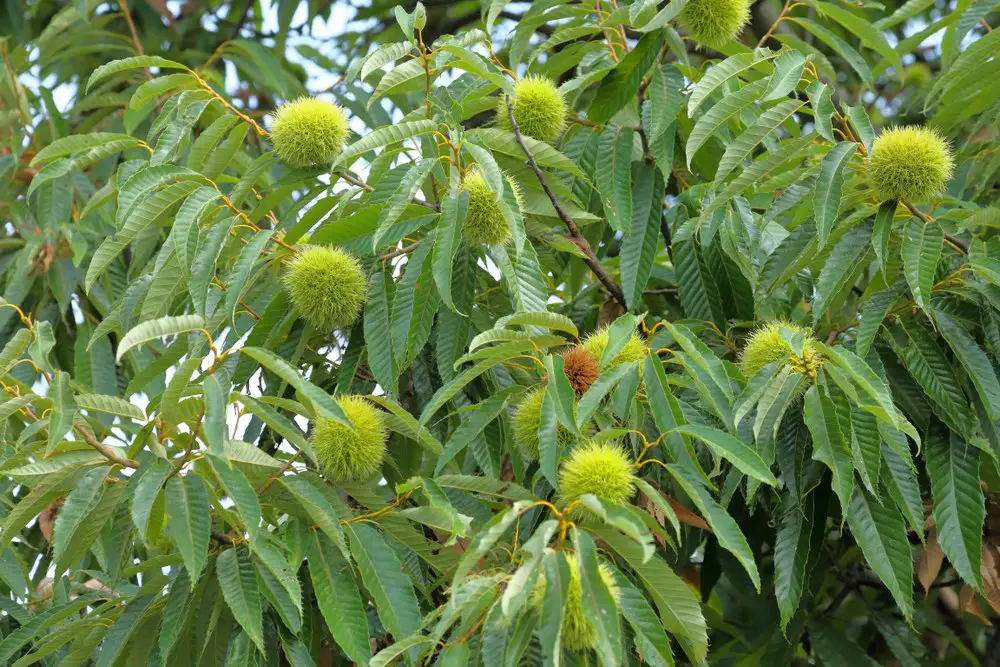
The American Chestnut is an attractive tree that requires appropriate care to protect it from Chestnut blight disease. While not extinct, it is no longer as common as it was in the past. It thrives well throughout western Ohio, particularly near the Indiana border.
It produces edible chestnuts that you can pick in the late fall and roast or season to enjoy. It is also an attractive shade tree and can protect you from heavy winds, rain, and snow during the wet seasons in Ohio.
- Scientific name: Castanea Dentata
- Plant Type: Deciduous
- Plant Size: 60-90 feet
- Sun Exposure: Full to partial sun
- Bloom Time: June to July
- USDA Plant Zone: 4-8
Black Oak
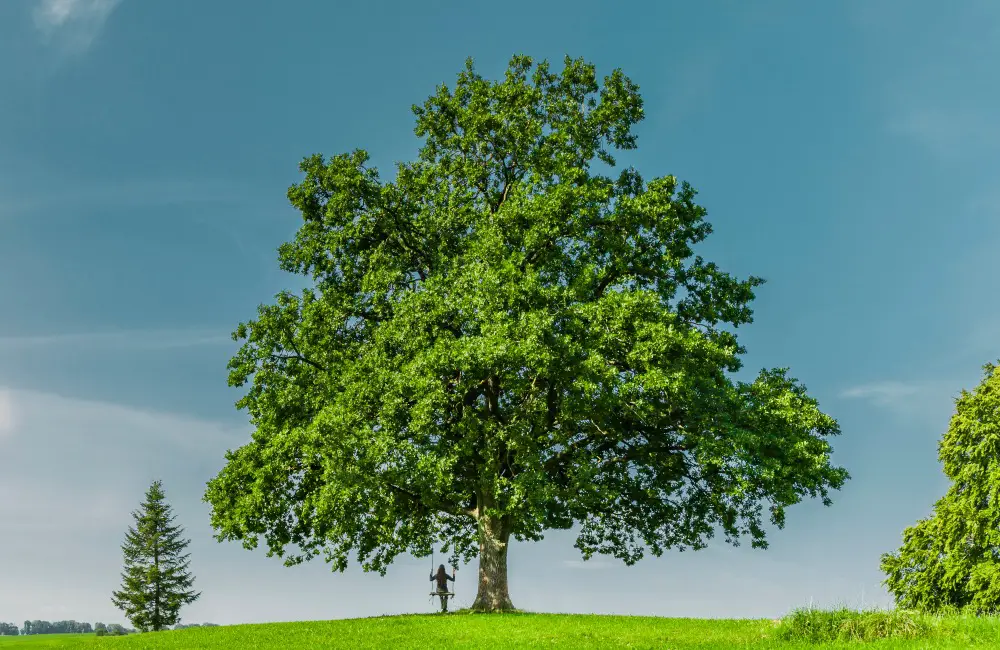
Black Oaks are important trees for wildlife because they drop heavy amounts of acorns, which small and large animals alike can eat. They have an attractive and broad branching system that produces a glossy green leaf that turns dull red to orange-brown in winter.
Their flowers are usually hard to spot, though male flowers have an attractive appearance. Black Oaks branches tend to look a little “unruly” or irregular, which is part of their charm. They can thrive in many soil types, including poor and dry areas.
- Scientific name: Quercus velutina
- Plant Type: Deciduous
- Plant Size: 50-60 feet
- Sun Exposure: Full sun
- Bloom Time: June to July
- USDA Plant Zone: 3-9
Black Locust
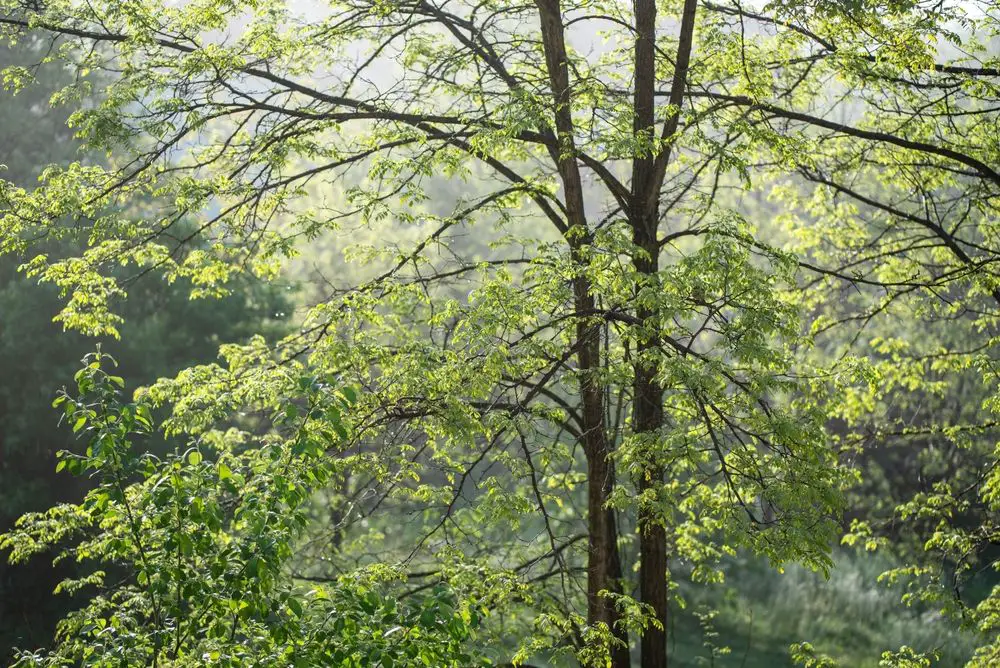
The Black Locust tree produces gorgeous flowers that produce a fragrant aroma that helps your yard smell a bit nicer. Careful trimming throughout the growth season can keep its branches from taking over a yard and keep its height at a reasonable 20-30-foot range.
Their leaves are a gorgeous blue-green that transitions to yellow-green in the fall. If you live in areas with rare rain, this tree is a great option because of its drought-resistant nature. Try to use this as a shade tree or a decorative growth along your property borders.
- Scientific name: Qrobinia pseudoacacia
- Plant Type: Deciduous
- Plant Size: 20-60 feet
- Sun Exposure: Full sun
- Bloom Time: May to June
- USDA Plant Zone: 3-8
Colorado Blue Spruce
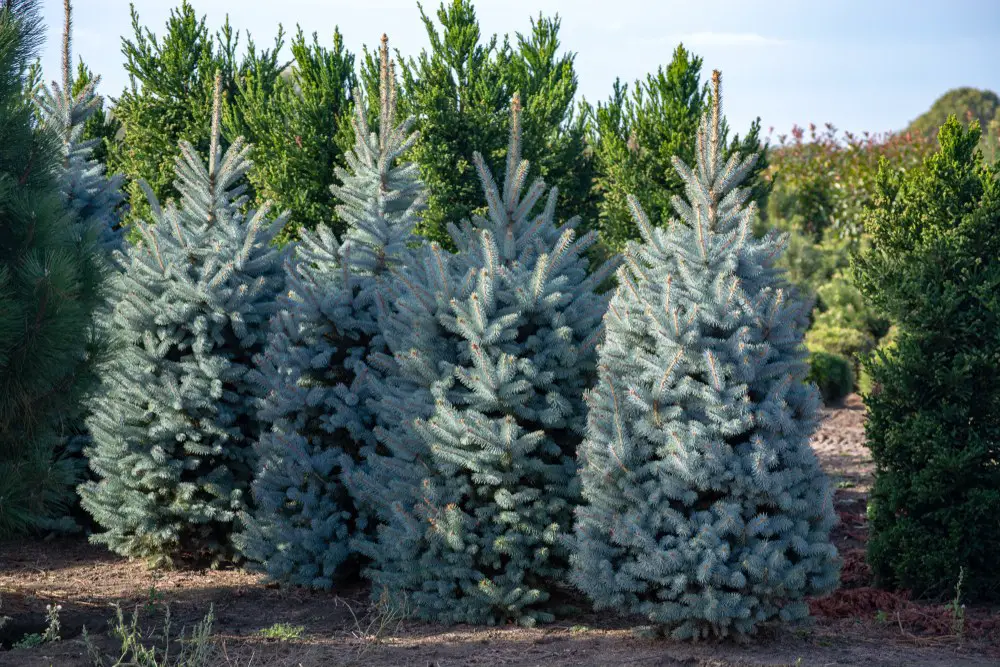
The Blue Spruce is one of the most popular Christmas trees because it grows very evenly and produces a rich color that works perfectly for these trees. Their pyramid shape can grow rather tall when grown in sand, loam, or clay, and when given partial shade to full sun.
They also grow well in wet, moist, and dry soils, which makes them one of the easiest trees to grow in Ohio. They do tend to suffer from spider mite invasions, such make sure you get them sprayed occasionally. Occasional cone drops can be easily cleaned up throughout the season.
The Colorado Blue Spruce is a spiny pine with a bluish-green hue. They are one of the most popular Christmas tree choices due to their symmetry and color.
- Scientific name: Picea pungens
- Plant Type: Evergreen
- Plant Size: 30-130 feet
- Sun Exposure: Partial shade to full sun
- USDA Plant Zone: 1-8
Eastern Hemlock
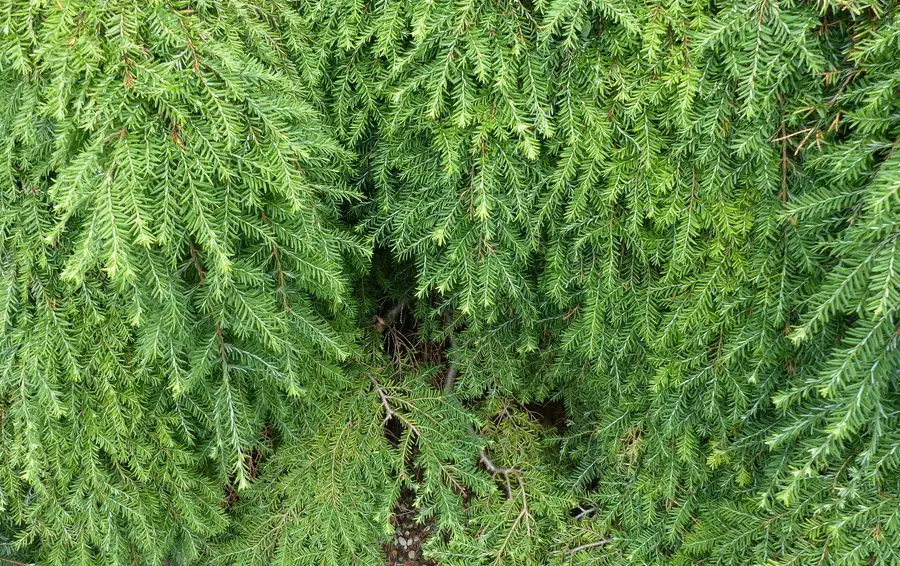
The Eastern hemlock is easy to spot immediately because its top droops slightly and gives the tree a slightly different look. The needles include white and green bands that grow densely throughout the tree. Most tolerate acidic soil but have shallow root systems that require regular watering.
You can find them throughout most of Ohio, particularly in shady areas. Their dense growth makes them useful as a privacy tree, though they may also work well as a shade or sheltering tree.
- Scientific name: Tsuga canadensis
- Plant Type: Evergreen
- Plant Size: 50-160 feet
- Sun Exposure: Partial shade to full sun
- USDA Plant Zone: 3-7
Honey Locust

The Honey Locust is a drought-resistant tree that grows very well throughout most Ohio regions, including towards southern areas. They tend to spread out heavily through a yard and often have spiky thorns that you can trim. Some growers produce thorn-free versions, though.
Typically, they thrive best in warmer and drier areas, making them even better for south Ohio. They are very hardy and can resist poor conditions, like bad soil and even air pollution in cities. It also resits most pests, such as webworms and moths.
- Scientific name: Gleditsia triacanthos
- Plant Type: Deciduous
- Plant Size: 30-100 feet
- Sun Exposure: Full sun
- Bloom Time: May to June
- USDA Plant Zone: 4-9
Kentucky Coffeetree
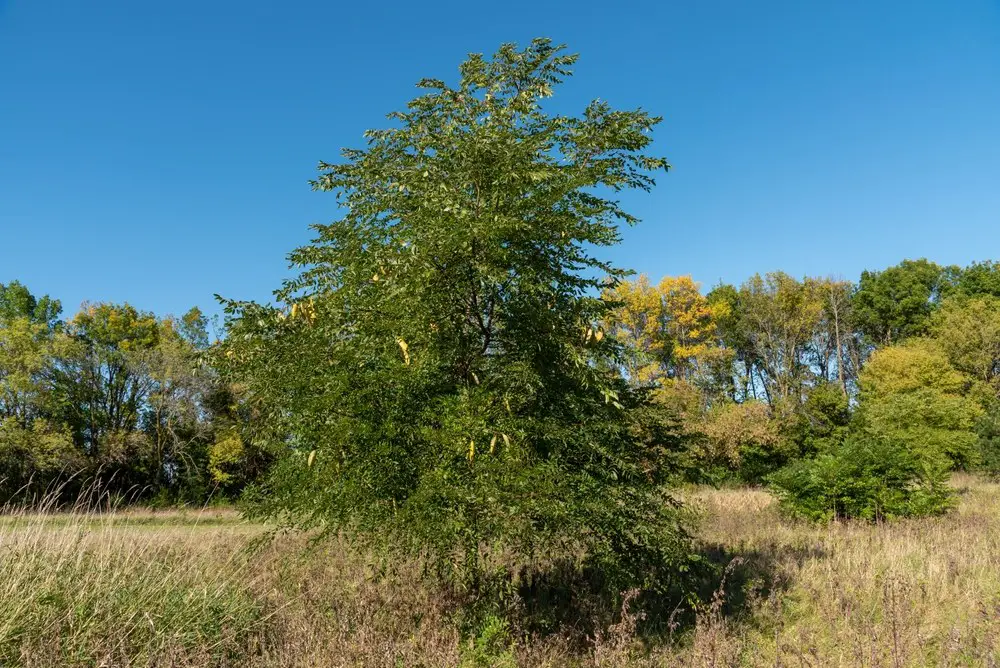
The Kentucky Coffeetree blooms beautifully in late spring to develop greenish-white flowers with an aromatic smell. They have a touch of rose to them, which makes them great for gardens. They do tend to grow high and spread out if you don’t trim them regularly.
The Coffeetree grows best in rich and moist soils and typically prefers plenty of soil aeration. They can thrive in many environments but often like warmer areas. Note that they will lose trees and seeds, so they do require some cleanup toward the beginning of winter. However, they resist pests very well.
- Scientific name: Gymnocladus dioicus
- Plant Type: Deciduous
- Plant Size: 40-75 feet
- Sun Exposure: Full sun
- Bloom Time: May to June
- USDA Plant Zone: 3-8
Norway Spruce
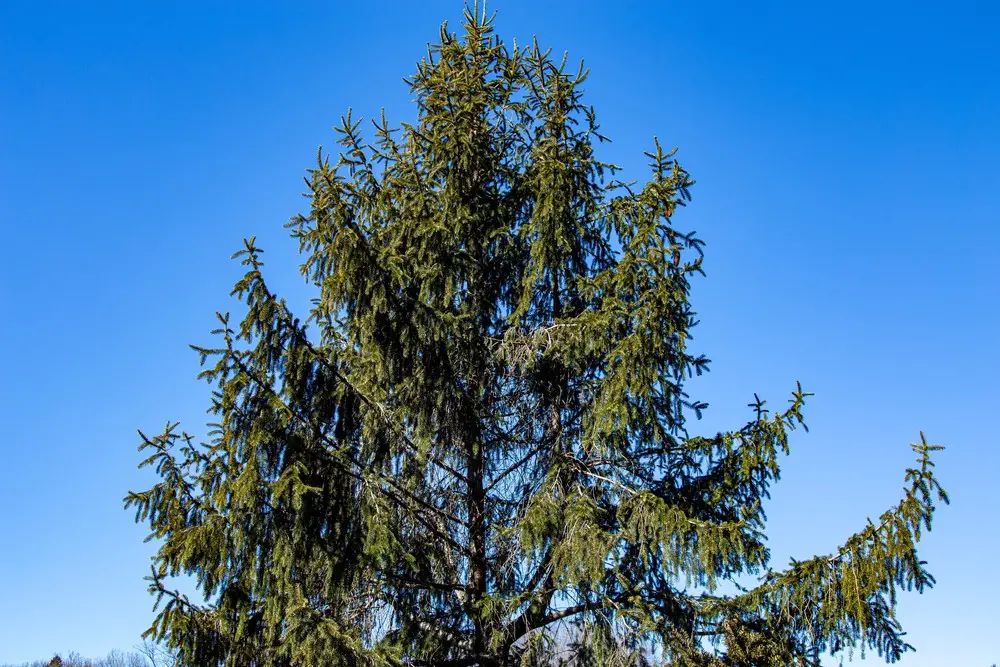
The Norway Spruce is common throughout Europe but has been successfully transplanted to American regions. It grows moderately fast and can live for up to 300 years when grown in appropriate conditions. The Norway Spruce needs full sun and a slightly alkaline soil and watering in dry seasons.
Note that this spruce can grow very tall over time but should stay reasonable within most people’s lifetimes. The crown spreads beautifully but will thin slightly as the tree grows in height. Cones and seeds are common in late fall.
- Scientific name: Picea abies
- Plant Type: Evergreen
- Plant Size: 40-180 feet
- Sun Exposure: Full sun
- USDA Plant Zone: 2-7
Sweet Buckeye
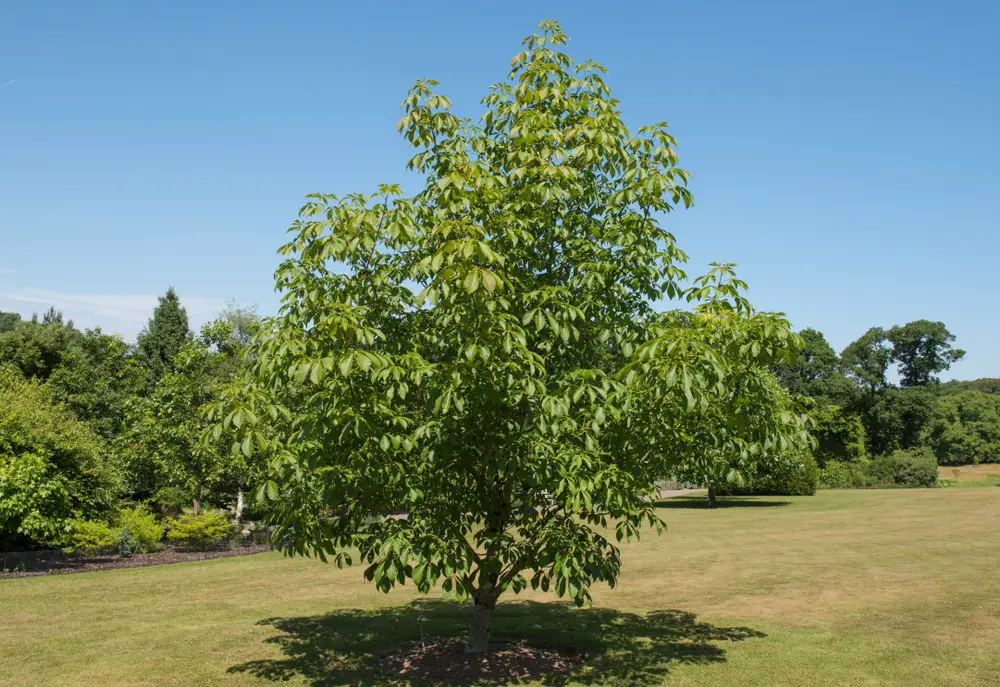
The Buckeye State gets its nickname from this easy-to-grow and attractive tree. The Buckeye grows in various soils and in a multitude of weather situations. They grow heavily throughout Ohio and into Canada but can also be found in warmer areas due to their hardiness.
They produce red, yellow, or yellow-green flowers that may change color slightly as the temperature changes. Buckeyes work well as a shade tree or privacy fence. Make sure their soil is neutral or slightly acidic and well drained.
- Scientific name: Aesculus flava
- Plant Type: Decicuous
- Plant Size: 60-90 feet
- Sun Exposure: Partial shade to full sun
- Bloom Time: Summer to fall
- USDA Plant Zone: 3-8

